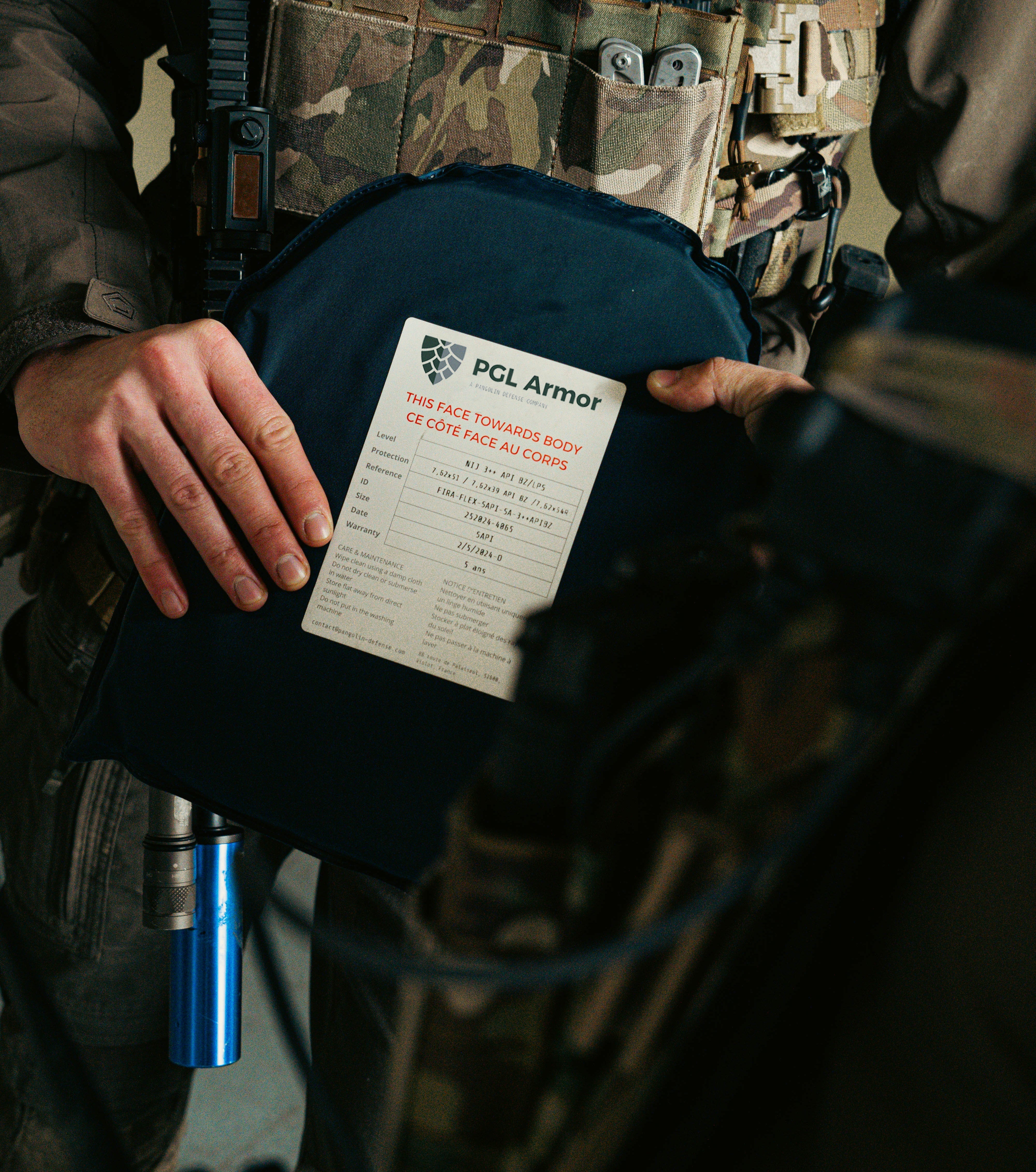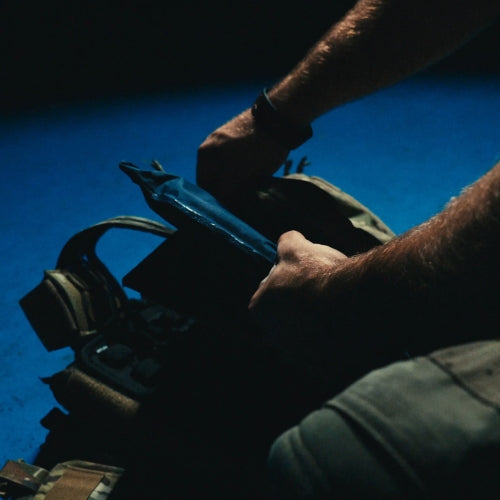Article: Steel vs. Ceramic: Which Ballistic Plate Should You Choose?

Steel vs. Ceramic: Which Ballistic Plate Should You Choose?
On the ballistic protection market, two types of plates stand out: steel plates and ceramic/composite plates.
Many people praise the merits of steel, often highlighted for its strength and lower cost. However, on closer inspection, steel has serious drawbacks that can, in some cases, make it counterproductive when it comes to protection.
If you’re looking for an effective solution suited to modern threats, it’s essential to understand the differences between these two technologies in order to make an informed choice.
1. Steel plates: strong, but at what cost?
Steel ballistic plates are among the oldest and most commonly used by some security forces and civilians seeking affordable protection. They are made of hardened steel and often coated with an anti-fragmentation layer.
✅ Advantages of steel plates
-
Extreme durability: Steel doesn’t crack and can withstand multiple hits, unlike ceramic plates that degrade after each impact.
-
Longevity: Less sensitive to environmental conditions (humidity, heat), it doesn’t deteriorate over time.
-
Affordable cost: Cheaper than ceramic/composite plates.
-
Multi-hit protection: Can stop several rounds in the same spot without breaking.
❌ Major drawbacks of steel
1️⃣ Heavy weight: an operational handicap
Steel plates are very heavy. A standard SAPI M (25x30 cm) plate can weigh over 4 kg, almost twice as much as an equivalent ceramic/composite plate. This excess weight affects mobility, endurance, and reaction speed — a critical disadvantage in combat.
2️⃣ Spall effect: an added danger
When steel stops a bullet, metallic fragments can be projected in multiple directions, increasing the risk of injury. This phenomenon, known as spalling, can wound the face, neck, or arms. Some manufacturers apply an anti-spall coating, but it doesn’t fully eliminate the risk.
3️⃣ Backface trauma: severe internal injuries
Unlike ceramic plates that absorb impact energy, steel transmits a strong shockwave to the wearer. This can cause:
-
Fractures (ribs, sternum)
-
Internal injuries, or even cardiac arrest if the impact hits the chest
Steel absorbs almost no kinetic energy, meaning that even if the bullet doesn’t penetrate, the wearer’s body still takes a massive hit.
Steel summary:
While steel may seem appealing for its durability and lower price, it comes with serious downsides. Its weight, spall effect, and backface trauma make it far less effective than it appears.
2. Ceramic/composite plates: advanced technology
Ceramic/composite plates use a mix of advanced materials — often silicon carbide (SiC) or alumina — reinforced with ballistic fibers (para-aramid, UHMWPE). This design allows for effective energy absorption and optimized protection.
✅ Advantages of ceramic/composite plates
-
Reduced weight: Up to 50% lighter than steel, improving mobility and reducing fatigue.
-
Shock absorption: Greatly reduces backface trauma, lowering the risk of internal injury.
-
No secondary fragmentation: Unlike steel, there’s no risk of metal fragments injuring the wearer.
-
Superior protection against armor-piercing rounds: Silicon carbide plates are designed to stop hard-core bullets, offering better resistance against military-grade penetrators.
-
Enhanced comfort: Ideal for long missions thanks to their lighter weight and better heat dissipation.
❌ Drawbacks of ceramic/composite plates
1️⃣ Increased fragility
Ceramic plates can crack if dropped or subjected to heavy non-ballistic impacts. However, newer composite designs have greatly improved resistance to such damage.
2️⃣ Limited lifespan
Unlike steel, ceramic/composite plates can lose effectiveness after taking a hit, reducing multi-impact performance. Still, this is compensated by much higher protective capability.
3️⃣ Higher cost
Ceramic/composite plates generally cost more than steel ones, but the investment reflects the superior protection they provide.
Ceramic summary:
Ceramic/composite plates are currently the best option for optimal ballistic protection. They strike a perfect balance between strength, lightness, and impact absorption — ensuring higher survivability in real-world scenarios.
Conclusion: Why choose ceramic/composite over steel?
Although steel plates remain popular for their durability and low price, they suffer from major flaws:
-
Excessive weight
-
Secondary injury risks (spall, backface trauma)
-
Lower performance against armor-piercing rounds
Ceramic/composite plates provide superior protection thanks to their shock-absorbing ability, lightweight design, and better resistance to modern ballistic threats.
Our recommendation:
If your priority is effective protection without compromising mobility and safety, choose ceramic/composite.
If you’re on a tight budget and accept trade-offs in comfort and trauma risk, steel can still be an option — but only with extra safety measures (trauma pads, anti-spall coating).
In real combat, every gram and every millisecond counts. That’s why today’s military and professional users overwhelmingly prefer ceramic/composite plates over steel.

